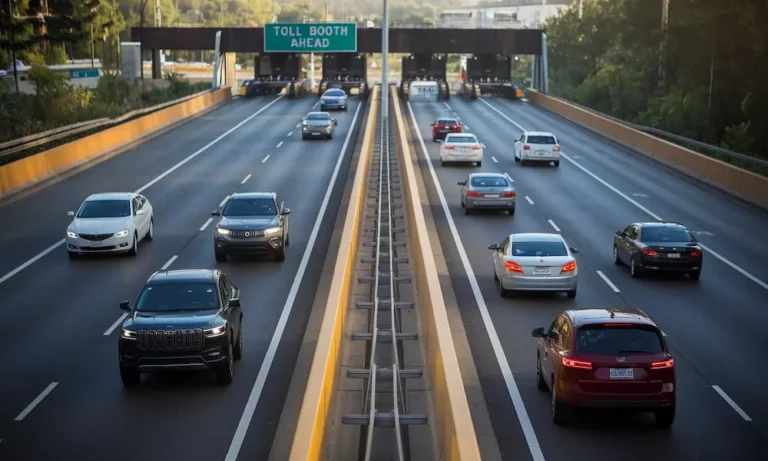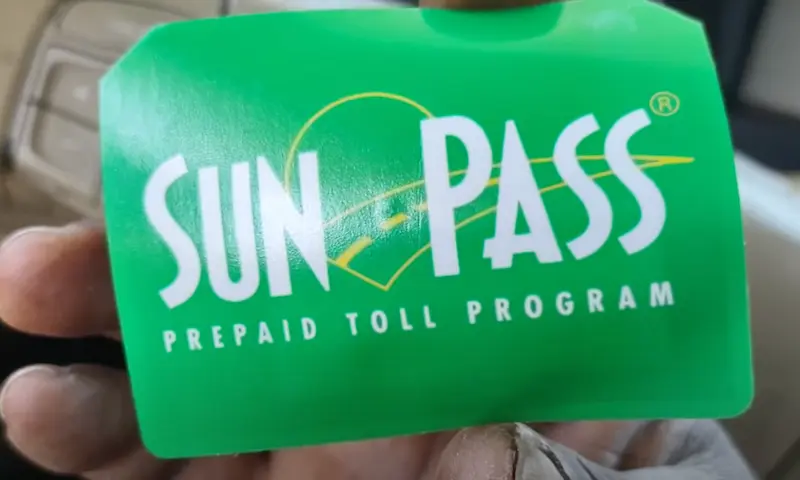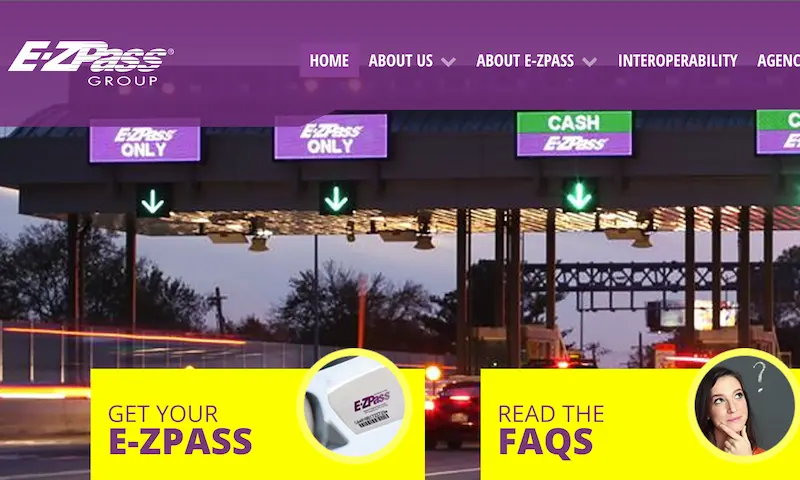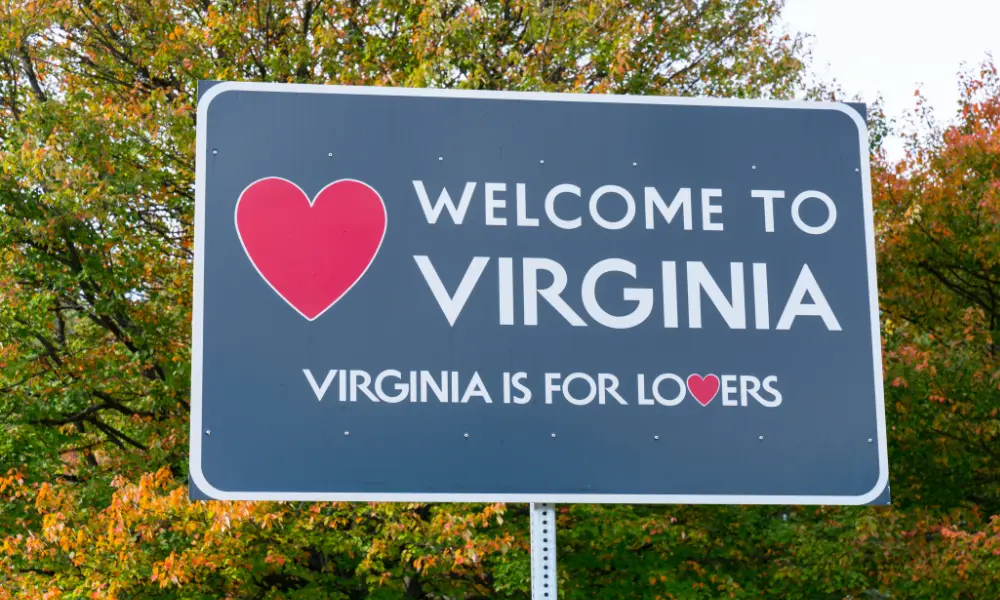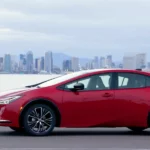Driving through California’s express lanes and wondering how that little plastic transponder magically counts your passengers? You’re about to discover the somewhat surprising truth about FasTrak’s occupancy detection system. It’s not as high-tech as you might imagine, but it’s definitely more complex than just taking your word for it.
FasTrak’s Primary Method: It’s All About Self-Reporting
Contrary to what many drivers believe, FasTrak doesn’t have magical x-ray vision that peers into your car. The primary method for counting passengers is actually quite low-tech.
When you drive through express lanes or toll areas, FasTrak relies mainly on what you tell it through your transponder setting. The FasTrak Flex and Clean Air Vehicle (CAV) transponders have switchable settings that you manually adjust before your trip.
These transponders have switches with positions for:
- 1 (solo driver)
- 2 (two occupants)
- 3+ (three or more occupants)
You’re responsible for setting the switch to match how many people are in your car. When you pass under a toll reader, the system registers your declared occupancy and charges you accordingly.
Visual Feedback at Toll Points: Your Setting Shows Up
Ever notice those electronic signs flashing numbers as you drive through? That’s your transponder setting being displayed.
When you pass under toll readers, the system shows your declared occupancy (1, 2, or 3+) on overhead signs. This serves two purposes:
- It confirms your setting worked correctly
- It helps enforcement officers spot potential violations
This visual confirmation system is part of what makes enforcement possible in express lanes, though it’s far from foolproof.
So Who’s Actually Checking? CHP’s Role in Verification
If FasTrak mostly relies on self-reporting, what prevents everyone from claiming they have three passengers when they’re driving solo?
The California Highway Patrol (CHP) is the primary enforcement mechanism. Officers stationed along express lanes can:
- See the flashing number displayed at toll points
- Visually check if the actual passenger count matches
- Pull over vehicles with mismatched counts
Getting caught misrepresenting your occupancy isn’t cheap—the minimum fine is $490. That’s enough to make most people think twice before cheating.
Advanced Detection: Cameras and Technology (Sort Of)
Some regions in California have implemented more sophisticated technology to verify occupancy claims, though their effectiveness varies.
Camera-Based Systems
In Southern California, particularly the Metro ExpressLanes, there’s an Occupancy Detection System that uses cameras to:
- Capture images of vehicle interiors
- Count visible passengers
- Compare counts with transponder settings
These systems are designed to detect passengers, including car seats and children. For privacy reasons, facial features in these images are supposedly redacted.
Infrared Technology Limited Deployment
The Orange County Transportation Authority reportedly uses infrared cameras on certain express lanes. These cameras detect heat signatures from passengers, potentially providing more accurate counting than visual cameras alone.
However, many drivers express skepticism about these systems’ accuracy, especially regarding their ability to detect:
- Infants in car seats
- Passengers in vehicles with tinted windows
- People sitting in rear seats
When Technology Fails: Billing Issues
The system isn’t perfect, and technical failures do occur. When transponder readers fail to detect your transponder:
- The system defaults to license plate recognition
- Your account gets charged at the solo driver rate regardless of actual occupancy
This has created frustration for many carpoolers who report being incorrectly charged despite having multiple passengers and properly set transponders.
Regional Differences: Not All FasTrak Systems Are Equal
How FasTrak counts passengers isn’t consistent across California:
Bay Area: Relies more heavily on visual CHP enforcement with minimal automated verification
Southern California: Uses more advanced camera-based detection systems
Orange County: Implements some infrared technology for occupancy detection
This regional variation means your experience might differ depending on where you’re driving.
Is It Really Just an Honor System?
Despite the enforcement mechanisms and technological aids, many consider FasTrak’s passenger counting to be largely honor-based in practice.
Why? Because:
- CHP resources are limited—officers can’t monitor all lanes at all times
- The cameras and detection systems have significant limitations
- The sheer volume of traffic makes comprehensive verification impossible
As one Reddit user noted, “It’s mostly on the honor system, with the threat of a big ticket if you get caught.”
Practical Tips for FasTrak Users
To avoid issues with FasTrak’s passenger counting:
- Always set your transponder correctly before entering express lanes
- Keep your transponder visible on your windshield
- Make sure passengers are visible (especially important in regions with camera systems)
- Check your account statements regularly for incorrect charges
- Contact customer service promptly if you notice billing discrepancies
The Transponder’s Role: More Critical Than You Think
Your transponder isn’t just a payment device—it’s your declaration of occupancy. The FasTrak Flex and CAV transponders are designed specifically for express lanes and carpool facilities.
When you switch settings, you’re making a legal declaration about your vehicle’s occupancy. This is why it’s crucial to set it accurately.
How Different Occupancy Levels Affect Your Toll
The number of passengers you declare affects what you pay:
| Region | Solo Driver | 2 Occupants | 3+ Occupants |
|---|---|---|---|
| I-580 | Full toll | Free | Free |
| SR-237 | Full toll | Half-price | Free |
| Most Bay Area Bridges | Full toll | Discounted | Discounted |
These varying requirements make it essential to understand the specific rules for the express lanes or bridges you use regularly.
Technical Limitations: What FasTrak Can’t Really See
Despite advancements, FasTrak’s occupancy detection has significant limitations:
- Tinted windows can prevent camera systems from accurately counting passengers
- Small children or infants may not be detected by camera systems
- Passengers in rear seats are often harder to detect
- Weather conditions can affect camera visibility
These limitations explain why enforcement still heavily relies on CHP officers rather than fully automated systems.
The Future of Passenger Detection
Transportation agencies are working to improve occupancy verification technology. Future systems might include:
- More precise infrared detection
- AI-powered image recognition
- Bluetooth or smartphone-based occupancy verification
- Weight sensors in express lanes
However, for now, the system remains primarily dependent on your honesty when setting that transponder switch.
The Cost of Cheating vs. Compliance
Some drivers might be tempted to misrepresent their occupancy to save on tolls, but consider the math:
- Potential savings: $5-15 per trip in toll charges
- Cost if caught: Minimum $490 fine
You’d need to cheat successfully for 33-98 trips to make up for just one citation. The financial risk simply isn’t worth it.
When Systems Conflict: Transponder vs. Camera
What happens when automated systems detect a different number of passengers than what you’ve declared on your transponder?
In regions with camera systems:
- The camera count might override your transponder setting
- You could receive a violation notice
- You may need to contest the charge with evidence of your actual occupancy
This is why it’s important to always set your transponder correctly and ensure all passengers are clearly visible.
FasTrak’s Honor System: Surprising but True
The reality that surprises most drivers is how much FasTrak relies on the honor system. Despite all the technology and enforcement mechanisms, the system fundamentally trusts drivers to accurately report their passenger counts.
The steep penalties for violations serve as the primary deterrent, rather than sophisticated detection systems. While cameras and CHP officers provide some oversight, the vast majority of express lane trips go unverified.
What Users Really Think About FasTrak’s Counting Ability
Public opinion about FasTrak’s ability to count passengers is decidedly skeptical. Many drivers doubt that the system can accurately detect occupants, especially:
- “How can they see through my tinted windows?”
- “If they have cameras that can count, why do I need a switchable transponder?”
- “I’ve been charged incorrectly multiple times despite having passengers.”
This skepticism reflects the technical limitations of current verification systems.
FasTrak’s Response to Criticism
Transportation authorities maintain that their enforcement systems are effective, pointing to:
- The dual approach of technology and human verification
- Ongoing improvements to camera systems
- The deterrent effect of high penalties
However, they also acknowledge the challenges in accurately verifying occupancy across thousands of daily trips.
In essence, FasTrak knows how many passengers are in your car because you tell it—with the occasional verification by cameras or highway patrol officers. It’s less Big Brother and more “trust but verify.”

